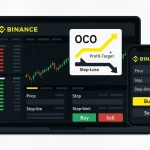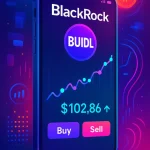If you hold crypto or fiat on Binance, understanding the Binance withdrawal process and limits is the key to moving funds smoothly and staying secure. In this practical walkthrough, you’ll learn how withdrawals work for both crypto and fiat, how verification affects your daily caps, what fees and minimums apply, and how to avoid common errors. You’ll also see how to increase limits, protect your account with advanced security, and troubleshoot pending or failed withdrawals.
Pro tip: If you’re new to Binance, you can register through this referral for a 20% fee discount and up to $10,000 in benefits: Binance sign‑up with 20% fee discount. Referral code: CRYPTONEWER.
—
Key takeaways
- The Binance withdrawal process and limits depend on your verification level, region, and asset type (crypto vs fiat).
- Crypto withdrawals require choosing the correct network, meeting minimum amounts, and passing address checks and Travel Rule requirements in some regions.
- Fiat withdrawals vary by currency and method (bank transfer, card, third‑party), each with different fees, timelines, and caps.
- Security settings like address whitelisting and 2FA reduce risk and may be required for higher limits.
- Limits and fees change over time. Always confirm in your account’s Withdraw page before sending funds.
—
Table of contents
- How Binance withdrawals work
- Verification levels and how they affect withdrawal limits
- Check your personal limits in-app or on web
- Crypto withdrawals step-by-step
- Choosing networks, fees, and minimums
- Fiat withdrawals: methods, timelines, and limits
- Internal transfers, P2P, and alternative off-ramps
- Security best practices: whitelists, 2FA, anti-phishing
- Troubleshooting pending or failed withdrawals
- Increasing your daily withdrawal limit
- Sub-accounts, corporate accounts, and API considerations
- Compliance notes: the Travel Rule and regional restrictions
- FAQ
—
1) How Binance withdrawals work
On Binance, a “withdrawal” is sending assets out of your Binance wallet to an external destination.
- Crypto withdrawal: You send coins/tokens from your Binance funding or spot wallet to an external blockchain address. You must select the correct network (e.g., BTC, ERC‑20, TRC‑20, BNB Smart Chain) and meet the minimum amount after fees.
- Fiat withdrawal: You transfer supported fiat currencies (e.g., EUR, GBP, AUD, BRL) to a bank account or payment provider. Availability depends on your country and verification level.
Both flows are gated by the Binance withdrawal process and limits associated with your identity verification level, risk checks, security configuration, and regional rules.
—
2) Verification levels and how they affect withdrawal limits
Binance ties daily withdrawal limits to KYC verification tiers. While exact numbers can change by region and account status, the pattern generally looks like this:
- Basic/Unverified: Very restricted. In many regions you cannot withdraw until you complete identity checks.
- Verified (Personal): Crypto daily limits sufficient for typical users, with fiat channels unlocked for supported regions. Limits vary by fiat method and currency.
- Verified Plus or Additional Proof of Address: Higher withdrawal limits and access to more fiat rails and higher per-transaction caps.
- VIP tiers (based on trading volume and holdings): May unlock even higher limits and preferential fee tiers.
Tip: Limits are also asset‑specific. Some coins and networks have higher minimums or different per-transaction caps. Regulatory requirements (for example, Travel Rule thresholds) can also affect what information you must provide when withdrawing.
—
3) Check your personal limits in-app or on web
Because the Binance withdrawal process and limits are dynamic, always check your current caps from your account:
- Web: Wallet > Overview > Withdraw > choose Crypto or Fiat > select asset/currency > see “Withdraw limits,” fees, and minimums displayed.
- App: Wallets > Withdraw > select Crypto or Fiat > pick asset/currency > tap the info icon to see limits, fees, and minimums for your region and tier.
You’ll also see the remaining daily quota after initiating a withdrawal.
—
4) Crypto withdrawals step-by-step
1) Prepare the destination address
– Get the correct address from your recipient wallet or exchange.
– Match the intended network. Example: USDT can exist on multiple networks (ERC‑20, TRC‑20, BSC). The destination must support the same network you pick on Binance.
2) Start the withdrawal
– Go to Wallet > Withdraw > Crypto.
– Select the coin/token.
– Paste the address and choose the network.
– Enter the amount. Binance will show network fees and minimum required.
3) Optional: Apply address whitelist
– If whitelist is enabled, your address must be pre-approved. This adds a security delay when adding new addresses (cooldown period) but prevents withdrawals to new addresses without your approval.
4) Confirm with 2FA
– Complete security checks: authenticator app code/SMS/email code, depending on your settings.
5) Monitor status
– Check Withdrawal History for status updates. You’ll see transaction ID (TXID) once the withdrawal is broadcast. Final settlement depends on network confirmations.
—
5) Choosing networks, fees, and minimums
Selecting the right network is crucial for both cost and success:
- Network compatibility: Only use a network that the destination wallet supports. A mismatch may lead to loss of funds.
- Fees vary by network: For example, ERC‑20 often costs more than TRC‑20 or BNB Smart Chain. Binance shows the exact fee before you confirm.
- Minimum withdrawal amounts: Each asset and network has a minimum. Your entered amount must exceed the minimum plus fees.
- Congestion and timing: High on‑chain congestion can increase fees and delays. If speed matters, consider networks known for faster finality.
Tip: If you’re sending to another Binance user, use Internal Transfer (no network fees) by selecting “Send via Email/UID” where available.
—
6) Fiat withdrawals: methods, timelines, and limits
Fiat off-ramping depends on your country, currency, and verification level. Common methods include:
- Bank transfers (SEPA, Faster Payments, ACH wires depending on region)
- Card withdrawals or third‑party payment providers
- Local bank rails (in select countries)
Key points:
- Daily and per‑transaction limits: These vary by method. You’ll see precise caps on the withdrawal page after choosing your currency and method.
- Fees and timelines: SEPA or local rails can be quick and low-cost; international wires may carry higher fees and take longer.
- Name matching: The bank account usually must match your verified name.
- Compliance checks: Additional verification may be required for large withdrawals.
—
7) Internal transfers, P2P, and alternative off-ramps
If fiat rails are not available in your region or you prefer an alternative:
- Internal transfer: Move funds between Binance users instantly via UID or email when supported. No network fees, but internal transfer limits still apply.
- P2P marketplace: Sell crypto to verified buyers in your local currency. Always follow P2P best practices and release crypto only after confirmed payment.
- Third‑party cash-out: Withdraw to other platforms/wallets that offer local off‑ramps. Verify counterparty fees, timelines, and trust.
—
8) Security best practices: whitelists, 2FA, anti-phishing
Higher limits mean a stronger security posture:
- Enable two‑factor authentication (Authenticator app preferred over SMS) and set an anti‑phishing code so Binance emails are easily verified.
- Use Address Whitelisting. New addresses require a cool‑down period before use, mitigating account compromise risk.
- Lockdown devices and API keys. Disable withdrawal rights for API keys unless strictly necessary.
- Use withdrawal confirmation emails judiciously. If you didn’t initiate a request, cancel it immediately and reset credentials.
—
9) Troubleshooting pending or failed withdrawals
Common reasons a withdrawal may be delayed or fail:
- Security review: Large amounts or new devices can trigger reviews.
- Cool‑down windows: After password resets or enabling 2FA/whitelist, withdrawals may be temporarily restricted.
- Travel Rule info missing: In some regions, you must provide recipient details (name, exchange, or wallet type) for certain thresholds.
- Network congestion: On‑chain delays occur during peak times.
- Incorrect network or memo/tag: Some assets (XRP, XLM, EOS) require destination tags/memos. Missing or wrong tags can lead to delays or manual recovery.
What to do:
- Check Withdrawal History for status and error messages.
- Confirm the destination network and any required memo/tag.
- If pending beyond typical windows and there’s no TXID, contact Support. Provide screenshots, TXID (if any), and timestamps.
—
10) Increasing your daily withdrawal limit
If you’re bumping against caps:
- Complete the next KYC tier (proof of address, source of funds if requested).
- Maintain a strong security profile (2FA, whitelist, device verification).
- For institutional needs, consider corporate accounts or VIP programs which may offer higher limits.
Note: The Binance withdrawal process and limits are influenced by local law; some regions have hard caps that cannot be raised without additional documentation.
—
11) Sub-accounts, corporate accounts, and API considerations
- Sub-accounts: Popular with institutions and advanced traders. Parent accounts manage limits and permissions. Withdrawals may require parent approval.
- API keys: By default, disable withdrawal permissions on API keys. If enabled, use IP whitelisting and the least-privilege principle.
- Audit trails: Periodically export withdrawal history for accounting and compliance.
—
12) Compliance notes: the Travel Rule and regional restrictions
In certain jurisdictions, the Travel Rule requires exchanges to share basic beneficiary and originator details for qualifying transfers. Practically, this can add a step where you specify:
- Whether the destination is a personal wallet or an exchange
- Recipient name (if sending to another VASP/exchange)
- Additional identifiers as required by local regulations
Regional availability varies. Some countries support comprehensive fiat rails; others rely mainly on crypto withdrawals or P2P. Always review Binance’s latest supported countries and payment methods inside your account.
—
13) FAQ
Q: What’s the fastest way to “withdraw” between Binance accounts?
A: Use Internal Transfer via UID/email when available. It’s near-instant and has no network fees.
Q: Why was my crypto withdrawal auto‑canceled?
A: Common causes are security cool‑downs, failing risk checks, or missing Travel Rule data. Check notifications and try again after addressing the prompt.
Q: How do I find the cheapest network for my token?
A: On the Withdraw page, compare networks and fees for the same token. Ensure the destination supports your chosen network.
Q: Can I withdraw during maintenance?
A: If a specific network or asset is under maintenance, withdrawals may be temporarily disabled. Wait until the maintenance window ends.
Q: How do I confirm a successful crypto withdrawal?
A: After a TXID appears, paste it into a blockchain explorer for your chosen network. Confirm enough block confirmations. Your recipient wallet should reflect the funds thereafter.
Q: Do withdrawal limits reset daily?
A: Yes, Binance daily limits typically reset on a rolling 24-hour basis per your time zone settings or platform standard. Check your remaining quota on the Withdraw page.
—
Get started and lock in lower fees
If you’re opening a new account, register via this referral to activate a 20% fee discount plus up to $10,000 in bonuses: Create your Binance account. Use referral code: CRYPTONEWER.
Remember, the Binance withdrawal process and limits evolve with policy, network conditions, and your verification level. Before finalizing any transfer, double-check: asset, network, fees, minimums, and destination tags/memos when required. For large or time-sensitive transfers, start with a small test withdrawal, then proceed with the full amount once confirmed.
—
Disclaimer: This guide is for educational purposes only and reflects general practices that may change. Always verify the latest limits, fees, and regional availability within your Binance account and consult professional advice where appropriate.





